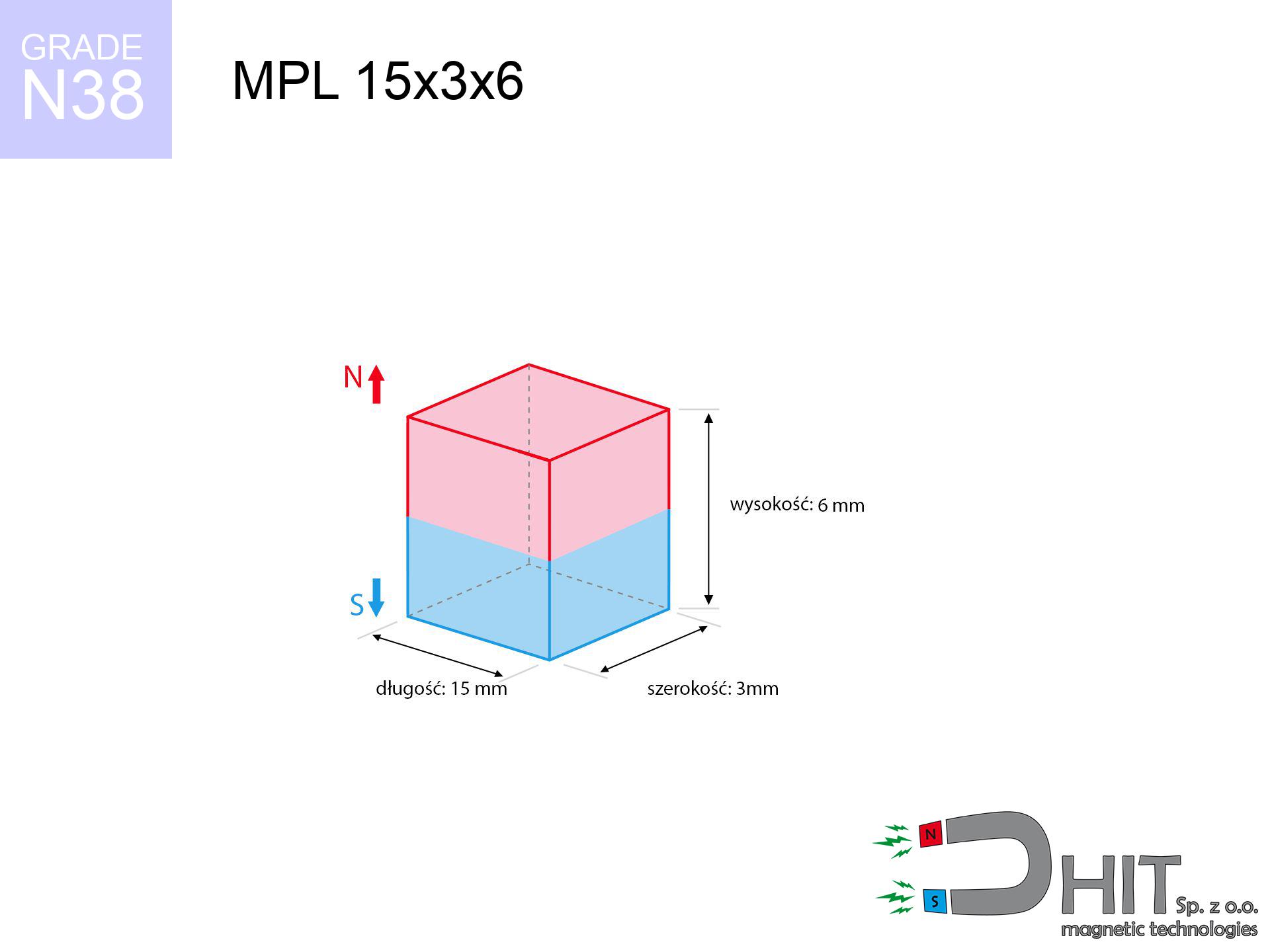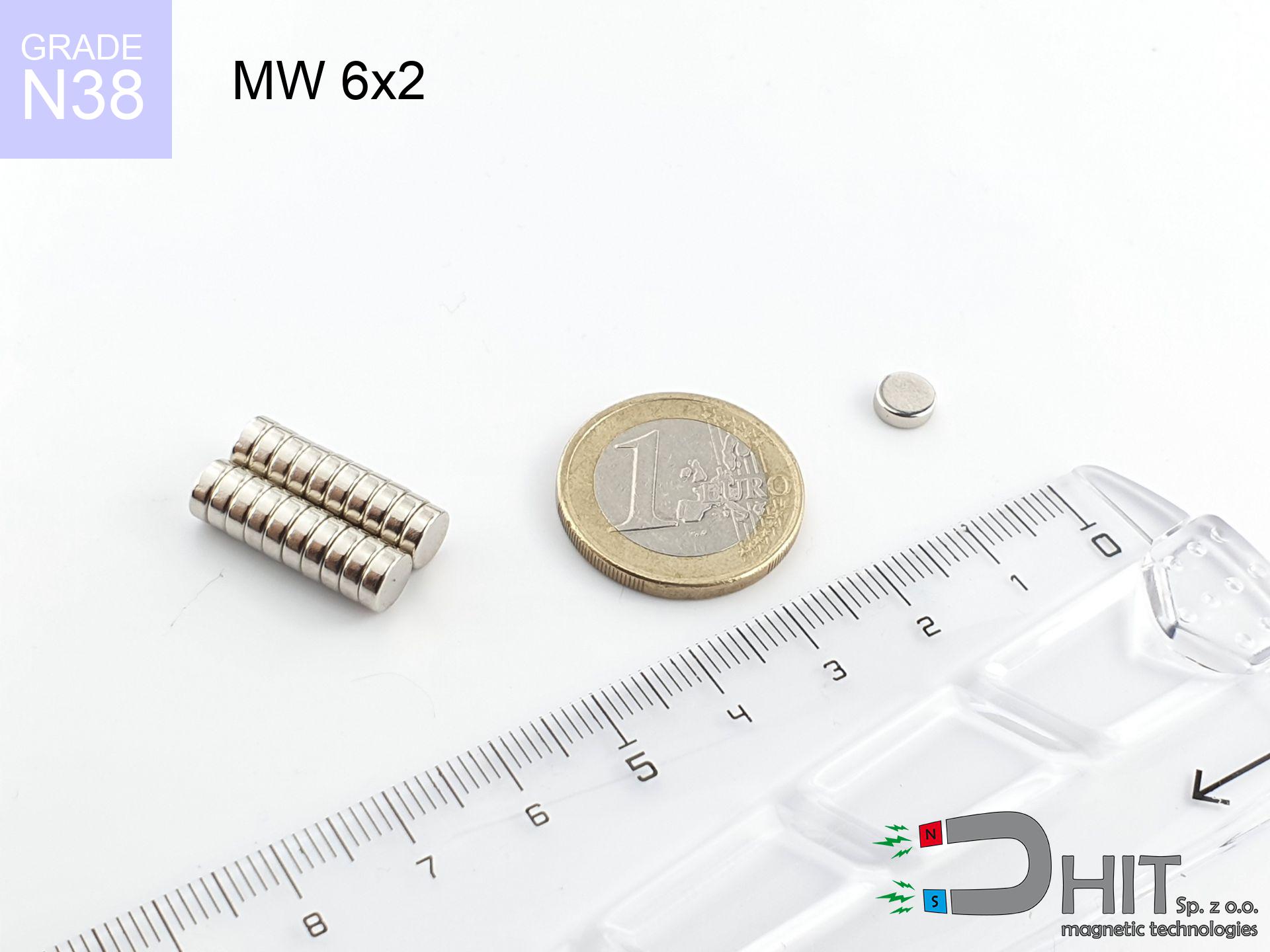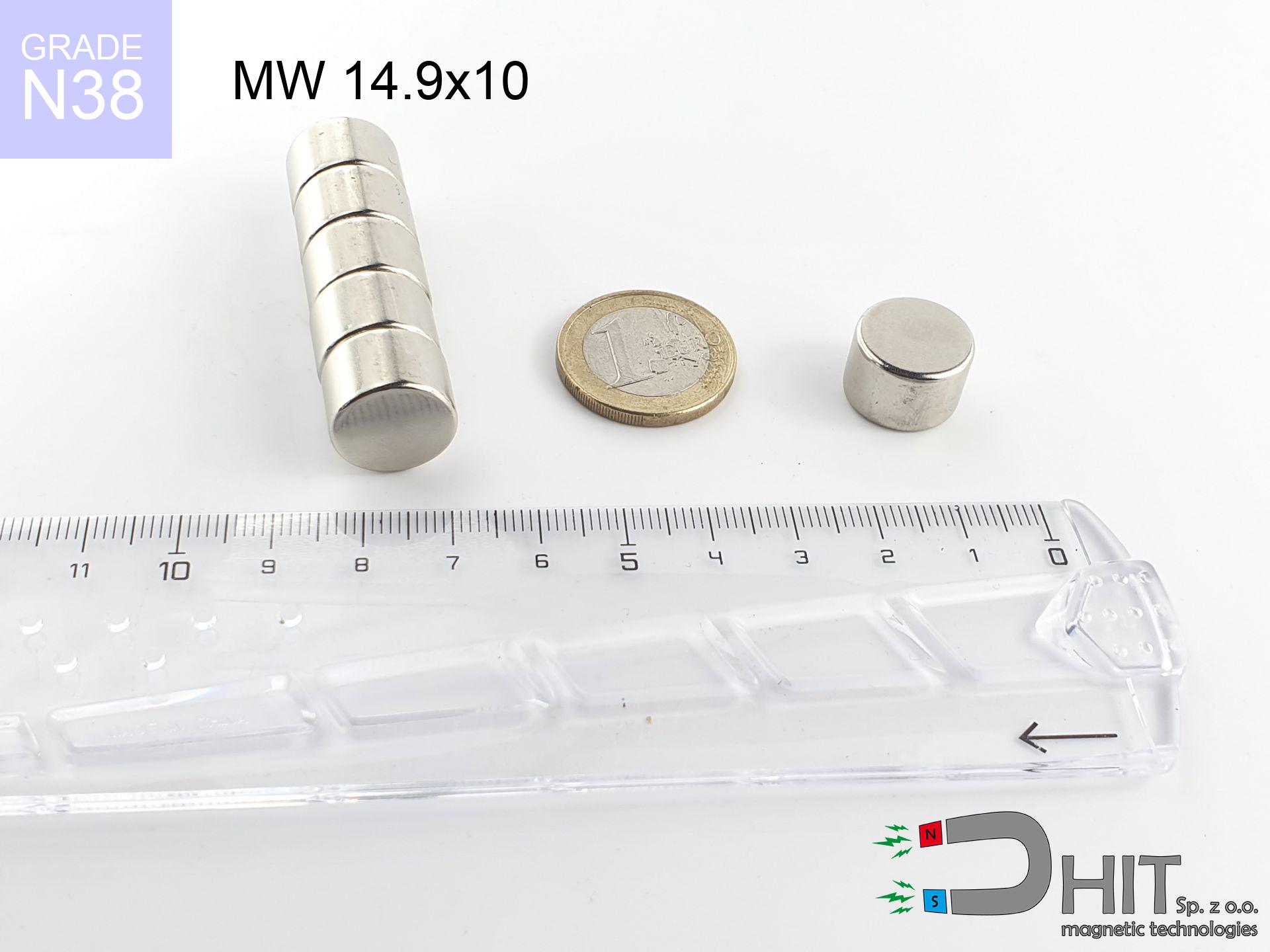MPL 15x3x6 / N38 - lamellar magnet
lamellar magnet
Catalog no 020122
GTIN: 5906301811282
length
15 mm [±0,1 mm]
Width
3 mm [±0,1 mm]
Height
6 mm [±0,1 mm]
Weight
2.03 g
Magnetization Direction
↑ axial
Load capacity
3.18 kg / 31.19 N
Magnetic Induction
543.23 mT
Coating
[NiCuNi] nickel
0.726 ZŁ with VAT / pcs + price for transport
0.590 ZŁ net + 23% VAT / pcs
bulk discounts:
Need more?Not sure about your choice?
Pick up the phone and ask
+48 22 499 98 98
or contact us via
request form
the contact form page.
Weight along with structure of magnets can be tested using our
power calculator.
Same-day processing for orders placed before 14:00.
Magnetic properties of material N38
Physical properties of sintered neodymium magnets Nd2Fe14B at 20°C
Shopping tips
Advantages and disadvantages of rare earth magnets.
In addition to their long-term stability, neodymium magnets provide the following advantages:
- Their magnetic field remains stable, and after around 10 years it decreases only by ~1% (theoretically),
- Neodymium magnets remain highly resistant to loss of magnetic properties caused by external magnetic fields,
- The use of an metallic layer of noble metals (nickel, gold, silver) causes the element to look better,
- The surface of neodymium magnets generates a maximum magnetic field – this is one of their assets,
- Through (adequate) combination of ingredients, they can achieve high thermal resistance, enabling operation at temperatures reaching 230°C and above...
- Possibility of individual forming as well as adapting to specific requirements,
- Huge importance in modern industrial fields – they serve a role in hard drives, electric motors, medical equipment, and modern systems.
- Compactness – despite small sizes they provide effective action, making them ideal for precision applications
Cons of neodymium magnets and ways of using them
- Brittleness is one of their disadvantages. Upon strong impact they can fracture. We advise keeping them in a special holder, which not only protects them against impacts but also raises their durability
- Neodymium magnets decrease their power under the influence of heating. As soon as 80°C is exceeded, many of them start losing their power. Therefore, we recommend our special magnets marked [AH], which maintain stability even at temperatures up to 230°C
- Due to the susceptibility of magnets to corrosion in a humid environment, we recommend using waterproof magnets made of rubber, plastic or other material resistant to moisture, in case of application outdoors
- Limited possibility of making threads in the magnet and complicated shapes - preferred is cover - mounting mechanism.
- Possible danger to health – tiny shards of magnets pose a threat, in case of ingestion, which becomes key in the context of child safety. It is also worth noting that tiny parts of these magnets can disrupt the diagnostic process medical in case of swallowing.
- With mass production the cost of neodymium magnets is a challenge,
Maximum lifting force for a neodymium magnet – what contributes to it?
Magnet power was determined for optimal configuration, taking into account:
- with the contact of a sheet made of special test steel, guaranteeing maximum field concentration
- with a thickness no less than 10 mm
- characterized by smoothness
- under conditions of ideal adhesion (surface-to-surface)
- during pulling in a direction perpendicular to the plane
- at ambient temperature approx. 20 degrees Celsius
Practical lifting capacity: influencing factors
In real-world applications, the actual holding force is determined by many variables, listed from the most important:
- Gap between magnet and steel – even a fraction of a millimeter of separation (caused e.g. by veneer or dirt) drastically reduces the magnet efficiency, often by half at just 0.5 mm.
- Loading method – catalog parameter refers to detachment vertically. When attempting to slide, the magnet holds much less (typically approx. 20-30% of maximum force).
- Base massiveness – too thin sheet does not close the flux, causing part of the power to be lost to the other side.
- Steel grade – ideal substrate is pure iron steel. Hardened steels may generate lower lifting capacity.
- Base smoothness – the smoother and more polished the surface, the better the adhesion and stronger the hold. Unevenness creates an air distance.
- Operating temperature – neodymium magnets have a sensitivity to temperature. When it is hot they lose power, and at low temperatures they can be stronger (up to a certain limit).
* Holding force was measured on the plate surface of 20 mm thickness, when the force acted perpendicularly, however under attempts to slide the magnet the lifting capacity is smaller. Moreover, even a slight gap {between} the magnet’s surface and the plate reduces the lifting capacity.
Safe handling of NdFeB magnets
Avoid contact if allergic
Certain individuals experience a sensitization to nickel, which is the common plating for NdFeB magnets. Extended handling can result in skin redness. We recommend wear protective gloves.
Adults only
NdFeB magnets are not toys. Accidental ingestion of several magnets may result in them pinching intestinal walls, which poses a severe health hazard and necessitates immediate surgery.
Impact on smartphones
A strong magnetic field interferes with the operation of compasses in phones and GPS navigation. Keep magnets near a device to prevent damaging the sensors.
Pinching danger
Watch your fingers. Two large magnets will snap together immediately with a force of massive weight, crushing anything in their path. Exercise extreme caution!
Machining danger
Powder produced during machining of magnets is combustible. Do not drill into magnets without proper cooling and knowledge.
Health Danger
Patients with a heart stimulator have to keep an absolute distance from magnets. The magnetism can disrupt the operation of the life-saving device.
Protect data
Very strong magnetic fields can erase data on credit cards, hard drives, and storage devices. Stay away of min. 10 cm.
Immense force
Use magnets consciously. Their huge power can surprise even professionals. Stay alert and do not underestimate their power.
Magnets are brittle
NdFeB magnets are sintered ceramics, which means they are very brittle. Clashing of two magnets leads to them breaking into small pieces.
Power loss in heat
Regular neodymium magnets (grade N) lose magnetization when the temperature goes above 80°C. Damage is permanent.
Important!
More info about hazards in the article: Magnet Safety Guide.





![UMP 94x28 [3xM10] GW F300 GOLD / N38 - search holder UMP 94x28 [3xM10] GW F300 GOLD / N38 - search holder](https://cdn3.dhit.pl/graphics/products/ump-94x28-m10-gw-f300-vux.jpg)

![UMP 107x40 [M8+M10] GW F400 Lina / N38 - search holder UMP 107x40 [M8+M10] GW F400 Lina / N38 - search holder](https://cdn3.dhit.pl/graphics/products/ump-107x40-m8+m10-gw-f400-+lina-bel.jpg)

